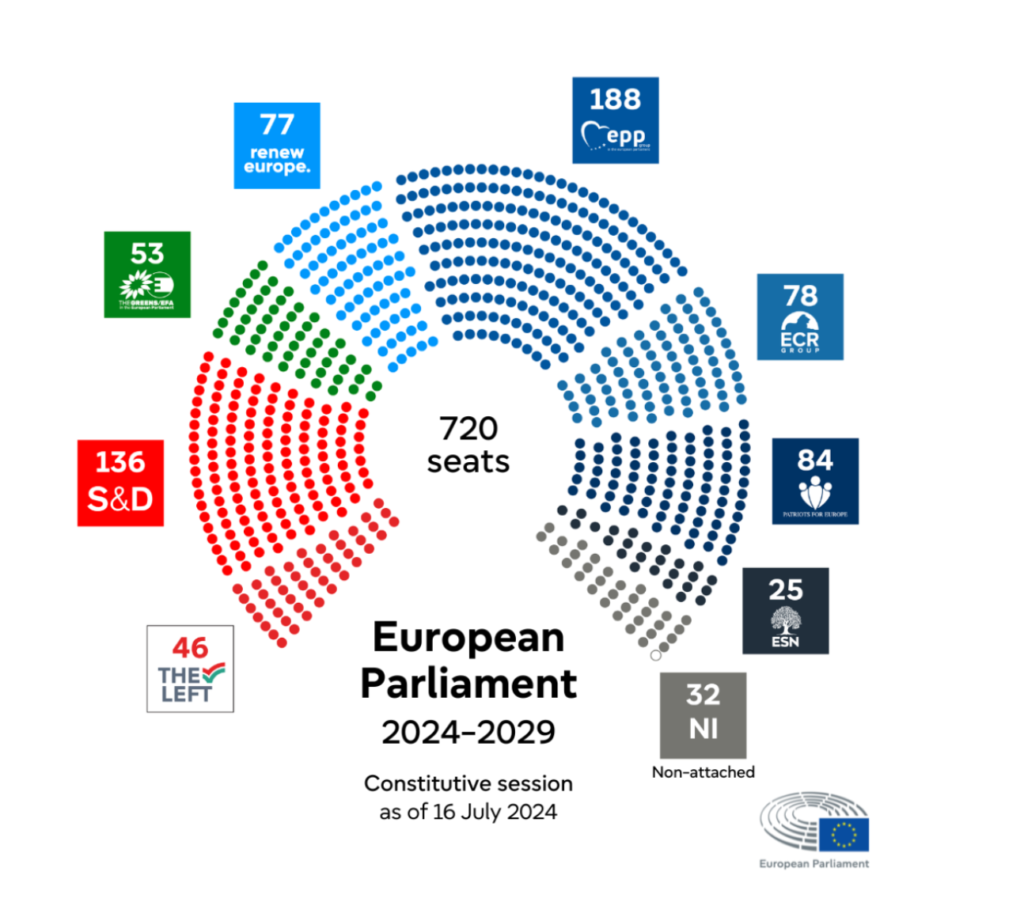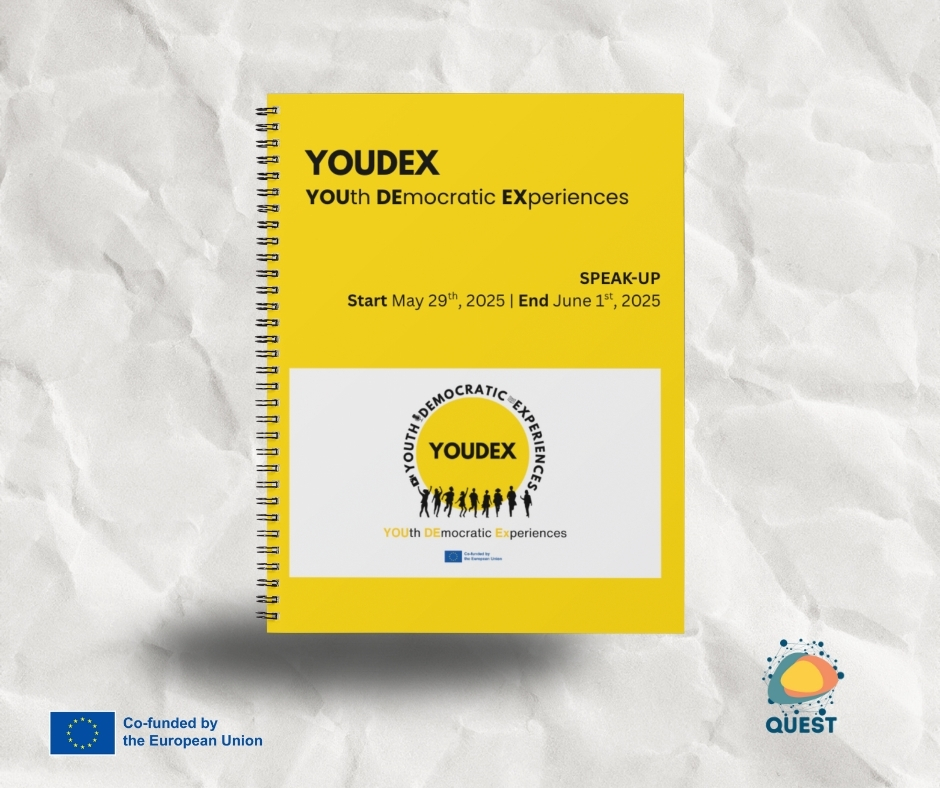From the 6th to the 9th of June 2024, Europeans went to the polls to elect their new representatives. In total, 185 million votes were casted in 27 counties, out of 359 million eligible voters, for the 10th EU Parliament elections since the first elections of 1979. While life doesn’t always keep us close to what happens at the EU-level, the results of these elections are important to remember, as they will affect education and children’s rights in the EU for the next five years.

Youth Vote and Representation in the EU elections

For the first time, the European elections saw young people of 16/17 years of age being able to vote in five EU countries, namely Austria, Belgium, Germany, Greece and Malta. This is a great start, which could inspire new countries to do so in the future.
As UNICEF reminds however, young people remain underrepresented in the EU decision-making, with an average age of 50 years for MEPs. The youngest MEP elected, Lena Schilling (Greens/EFA, Austria), is 23. This is a strong exemple that should be replicated all over the European Union, especially when accounting for the newly eligible 25 million young voters that have been described in some countries as more pro-european. Today, however, youth candidates were not listed in electable positions in 15 Member States.
A new political shift for Europe

Overall the European Elections have shown a new political shift for the Union, towards the right. The European People’s Party (EPP), a centre-right party, has won 12 seats, allowing it to remain the dominant political party in the European Parliament. It is followed, as previously, by the Social Democrats (S&D, Center-left) with 136 seats compared to 138 in 2019. The Renew Europe Group (Center-right) and the European Greens, respectively former third and fourth political groups in the balance, have lost 11 and 13 seats, leaving the space for right political parties to rise, and now representing the 5th and 6th groups in the European Parliament. The Left party came seventh, with 46 seats.
The main novelty comes at the third position, with the arrival of a new far-right European Party, called the Patriots for Europe. As a redesign of the previous Identity and Democracy Party (ID) which only had 49 seats, the Patriots for Europe’s creation was promulgated by the sharp rise of far-right elected MEPs in France, and its support from Hungary’s Fidesz Party. It now accounts for 84 seats, and is mainly composed of representatives from France (30), Hungary (11), Italy (8), Austria (6) and the Netherlands (6).
The right political shift pursued with the rise of the European Conservatives and Reformists, described by Politico as “primarily made up of Euroskeptic right-wing parties”, with members such as the Polish Law and Justice Party or Georgia Meloni’s Brothers of Italy, arriving fourth in Parliament with 78 seats.
The European Parliament now encompasses 8 European political parties, one more than in the last mandate. Following a series of scandals in Germany involving suspected corruption, espionage and potential Russian influence charges, the Alternative for Germany Party (AFD, far-right) was banned before the European Elections from the Identity and Democracy Party (ID), and was not convened to join the Patriots for Europe. In this context, having won 15.9% of the German votes in the EU elections, the AFD created the Europe for Sovereign Nations, now standing in the European Parliament, and of which it represents 14 of the 25 seats.
The winners of these elections
The rise of the far-right has, in some way, deepened the political legitimacy of the two main European Parties having won the European Elections : the EPP and the S&D.
The EPP has notably secured two high positions in the EU institutions, with the reelection, on July 18th, of Roberta Metsola for two and a half more years as President of the European Parliament, as well as for the reelection of Ursula Von der Leyen as the President of the European Commission for five more years.
In itself, these reelections represent rather positive news for education in the EU. As UNICEF reminds it, the last mandate has seen some positive trends regarding children’s rights’ consideration, with notably the creation of the Strategy on the Rights of the Child and the European Child Guarantee. This can also be said of education in the EU, who witnessed the start of the European Education Area, with a first communication on achieving the European Education Area by 2025 written by the European Commission to the rest of the EU institutions in 2020.
The two other top-jobs, namely the president of the European Council and the High Representative for Foreign Affairs and Security Policy, will most probably go to the second winning political party : S&D. Antonio Costa, former Prime Minister of Portugal and President of the country’s socialist party has been so far designated to endorse the role of President of the European Council, while Kaja Kallas, Estonia’s Prime Minister until last July, will become the new High Representative for Foreign Affairs and Security Policy of the European Union.
A strong boycott against the far-right
While this political shift has led to surprising results, notably in France with the triggering of a snap election and the political instability created for the Sholtz’ Coalition in Germany, the predicted rise of the right and far-right remain limited compared to 2023 predictions.
Centre-parties, namely, the EPP, S&D and Renew Europe Groups, together remain sufficient to secure the 361 votes, out of the 720 MEPs in the EU Parliament, needed to pass EU Legislation. This perceived majority grants them greater freedom of choice of allies, which could be at the detriment of political parties from the whole spectrum, including the European Greens, whose previous fourth position in the European Parliament had contributed to a strong environmental agenda in 2019-2024.
A strong boycott from the European parties holding the majority (EPP, S&D) and other allied parties, has so far led to a total exclusion of the Patriots for Europe (PfE) and the Europe for Sovereign Nations (ESN) parties to key EU Parliaments’ positions, notably in the EU Parliament’s committees. The Committee on Culture and Education (CULT) has, for instance, designated Nela Riehl, from the European Greens, as Chair, Bogdan Andrzej Zdrojewski, from the EPP as first Vice-Chair, Emma Rafowicz from S&D, as second Vice-Chair, Diana Riba I Giner from the European Greens as third Vice-Chair and Hristo Petrov from Renew as fourth Vice-Chair.
Time will tell us whether this first strong political will to rule without the far-right will remain over time, for the whole mandate. Eighty-four seats, still represents a strong political power in the European Parliament, one which could be utilised during times of political blockade.
Following the election of the President of the European Commission, a new work plan for the next five years was presented on July 18th, which we analysed right here.



